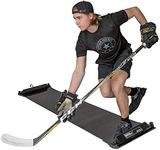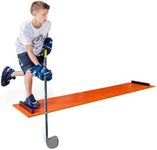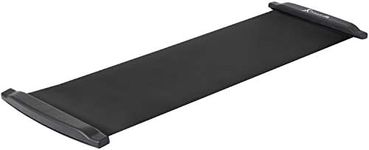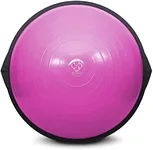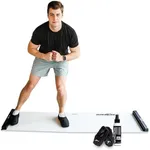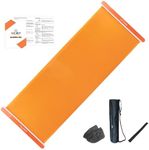Buying Guide for the Best Slide Board For Skating
Choosing the right slide board for skating can significantly enhance your skating experience, whether you're a beginner or an experienced skater. A slide board is a great tool for improving your balance, strength, and technique. To find the best fit for you, it's important to understand the key specifications and how they align with your needs and preferences.LengthThe length of a slide board is crucial because it determines the range of motion you can achieve while skating. Slide boards typically range from 5 to 8 feet in length. Shorter boards (around 5-6 feet) are suitable for beginners or those with limited space, as they are easier to control and store. Medium-length boards (6-7 feet) offer a balance between control and range of motion, making them ideal for intermediate skaters. Longer boards (7-8 feet) provide the most extensive range of motion and are best for advanced skaters looking to maximize their training. Consider your skill level and available space when choosing the length.
WidthThe width of a slide board affects stability and comfort during use. Most slide boards are around 20-24 inches wide. Narrower boards (20-22 inches) are more challenging and can help improve precision and balance, making them suitable for advanced skaters. Wider boards (22-24 inches) offer more stability and are better for beginners or those who prioritize comfort. Think about your balance skills and how much stability you need when selecting the width.
Surface MaterialThe surface material of a slide board impacts the smoothness and durability of your skating experience. Common materials include high-density polyethylene and other synthetic materials. High-density polyethylene is durable and provides a smooth glide, making it a popular choice. Other synthetic materials may offer different levels of friction and durability. If you are a beginner, look for a surface that offers a bit more friction to help control your movements. Advanced skaters might prefer a smoother surface for faster, more fluid motions.
End StopsEnd stops are the barriers at each end of the slide board that prevent you from sliding off. They are essential for safety and can vary in design and material. Some end stops are fixed and made of hard plastic, while others are adjustable or made of softer materials. Fixed end stops provide a solid barrier and are suitable for most users. Adjustable end stops allow you to customize the length of the slide area, which can be beneficial for different training exercises. Consider your safety needs and whether you want the flexibility to adjust the slide area when choosing end stops.
PortabilityPortability refers to how easy it is to transport and store the slide board. Some slide boards are designed to be lightweight and foldable, making them easy to carry and store. Others may be more robust and less portable. If you plan to use the slide board in multiple locations or need to store it in a small space, look for a model that is lightweight and easy to fold or roll up. If you have a dedicated space for training, portability may be less of a concern.
AccessoriesAccessories can enhance your slide board experience and include items like booties, carrying bags, and instructional DVDs. Booties are worn over your shoes to reduce friction and protect the slide board surface. Carrying bags make it easier to transport the board, and instructional DVDs can provide guidance on exercises and techniques. Consider what accessories are included with the slide board and whether they align with your training needs. Beginners might benefit from instructional materials, while advanced skaters might prioritize high-quality booties for a smoother glide.

